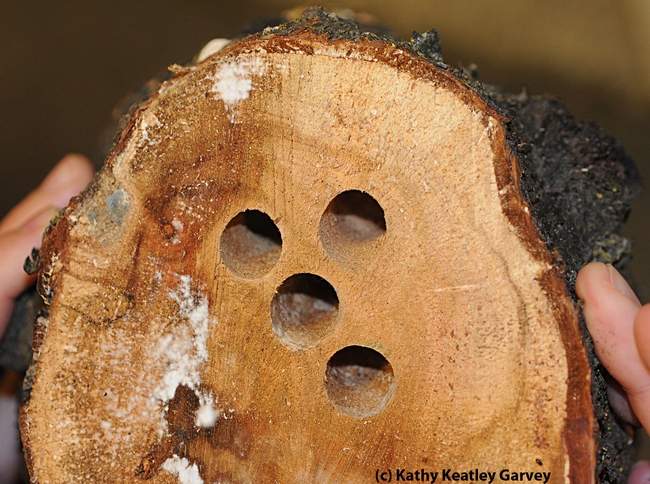If you've studied bees, you know that there are approximately 20,000 described species of bees in the world.
Most people are familiar with honey bees and bumble bees, but they don't know about "those big black bees" (carpenter bees) or "those green metallic bees" (sweat bees).
Harvard University and the Encyclopedia of Life to the rescue!
Jessica Rykken, Ph.D. of the Farrell lab at Harvard University, and editor Jeff Holmes, Ph.D. of the Encyclopedia of Life, Harvard University, have just published a field guide to bees that is simply outstanding.
The field guide, titled "Bees," is comprised of observer cards that are "designed to foster the art and science of observing nature," Rykken writes.
It's a guide that looks at bees much the way we all first started looking at bees. It's divided into anatomy, foraging, lifestyles, pollination, nesting habits, behavior, life cycle, associations (such as hitchhiking) and techniques (collecting and conservation).
Under nesting habits, you'll learn about the miners, masons, leafcutters and carpenters.
Under anatomy, you'll learn about body plan, look-alikes, size and shape, body color, antennae, wings, males ves females, pollen transport, tongue length, pilosity, stingers. Pilosity? What's that you ask? It means the density and pattern of hair on their bodies.
Lifestyles? No, not of the rich and famous. These point to social bees, solitary bees and cuckoo bees.
Rykken asked permission to use two of our photos, and they're in there, too. One is of Extension apiculturist Eric Mussen of the UC Davis Department of Entomology being stung by a honey bee (Apis mellifera), and the other is a chunk of plum tree wood drilled by valley carpenter bees (Xylocopa varipuncta). A Davis resident brought the plum tree wood into the Bohart Museum of Entomology for insect identification. Lynn Kimsey, director of the Bohart Museum (home of nearly 8 million specimens) and UC Davis professor of entomology, told him that valley carpenter bees (females) drilled the holes. The female valley carpenter bees are solid black, while the males are blond with green eyes.
The field guide can be downloaded for free on the Encyclopedia of Life website at http://eol.org. Or, just download this link to the PDF.
Attached Images:

